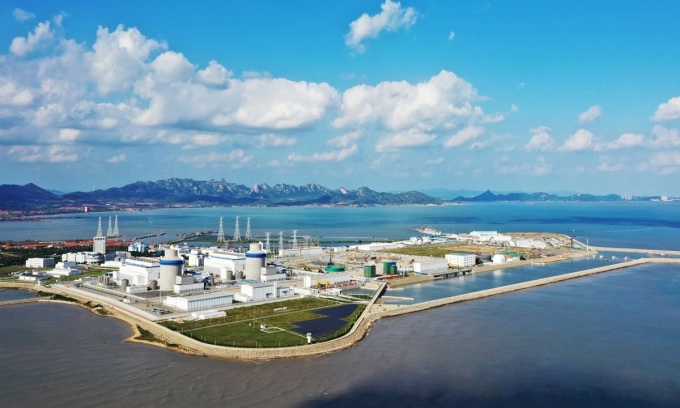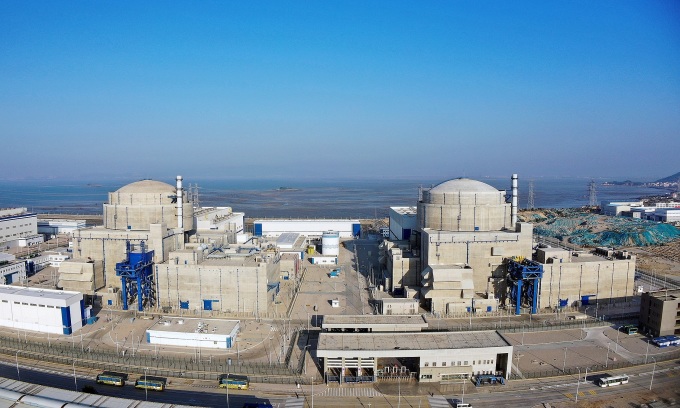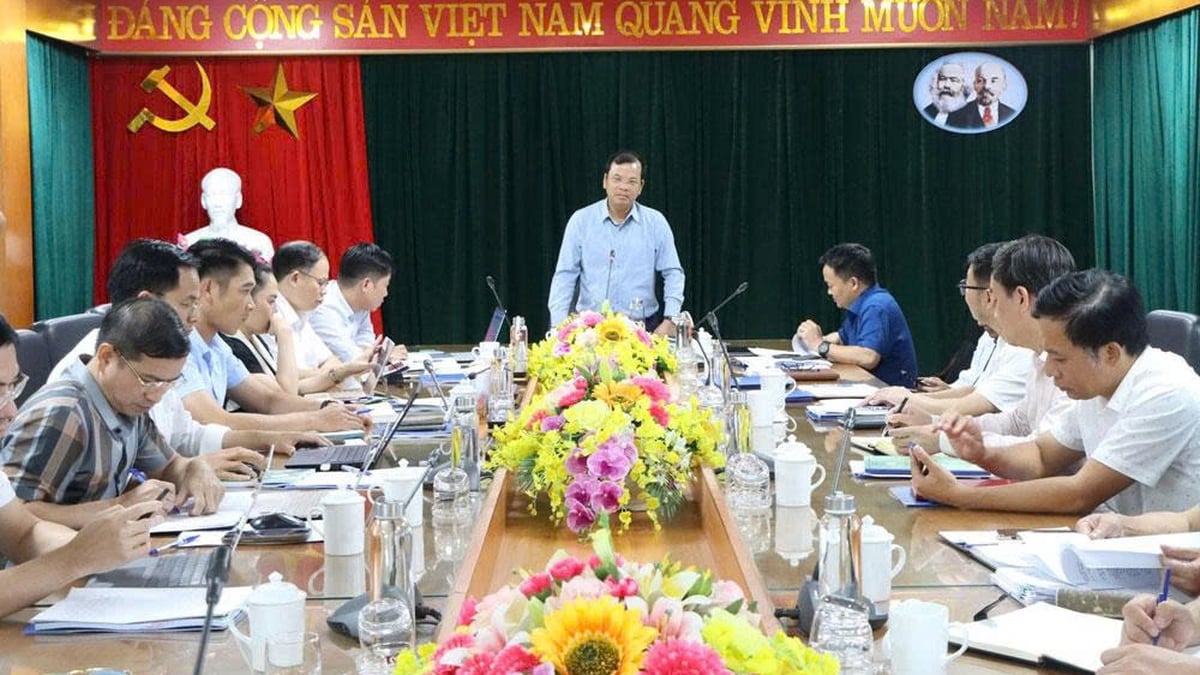Over the past seven decades, China has been steadily building reactors with the hope of surpassing the United States to become the world's largest nuclear power producer.
In a blue book released by the China Nuclear Energy Association (CNEA) on April 26, China continues to maintain its leading position in the world in the number of nuclear power units under construction, with 24 reactors under construction, with a total installed capacity of 26.81 million kilowatts.
Since 2022, China has approved 10 new nuclear power units, put three into commercial operation, and started construction on six new units. To date, China has 54 commercial nuclear power units with a total installed capacity of 56.82 million kilowatts.
China is the world's third-largest nuclear power producer, after the United States and France, generating about 10% of global nuclear power. Nuclear power contributed 4.9% of China's total electricity production in 2019.
Nuclear power is seen as an alternative to coal, as the Chinese public and officials become increasingly concerned about air quality, climate change and fossil fuel shortages. China hopes to become the world’s leading nuclear power by 2030 and reach its goal of generating 200 gigawatts of electricity by 2035, thanks to 150 additional reactors.
The country has two major nuclear power companies: China National Nuclear Corporation operating in the northeast and China General Nuclear Power Corporation, mainly in the southeast.

Haiyang nuclear power plant in Shandong province, eastern China. Photo: Global Times
China began developing nuclear power in the 1950s and 1958s, when it cooperated with the Soviet Union to build its first research facility, the Institute of Atomic Energy of the Chinese Academy of Sciences , and then established the China National Nuclear Corporation (CNNC) in 1955. In December 1958, nuclear power development became the top priority project in the Draft 12-Year Plan for Science and Technology Development of China.
In June 1959, the Soviet Union withdrew all nuclear technicians from China, forcing Beijing to invest and research on its own to continue developing nuclear power and achieve some remarkable achievements in nuclear development in the period 1961-1962.
In February 1970, China established the 728 Institute, now the Shanghai Nuclear Engineering Research and Design Institute (SNERDI), to plan the construction of nuclear power plants.
The first nuclear power plant designed and built by China, Qinshan, was built in 1984 and successfully connected to the grid on December 15, 1991.
To serve the goal of economic development, China continues to require the expansion of the electricity sector. In the 10th Five-Year Plan (2001-2005), Beijing identified an important part of its energy policy as "ensuring energy security, optimizing energy diversity, improving efficiency, and protecting the ecological environment". The 2013 nuclear safety plan stated that after 2016, only generation III nuclear power plants would be put into operation.
In 2014, China set a target of producing 58 gigawatts of nuclear power by 2020. However, following the Fukushima nuclear disaster in Japan, very few nuclear power plants have been built in China since 2015, so the target has not been met.
In 2017, the country's reactors produced a total of 38 gigawatts of electricity, but it aims to increase that to 120-150 gigawatts by 2030. "We have a complete system, with a solid foundation not only in design but also in construction and safety," Zheng Mingguang, president of SNERDI, said at the time. "That's why China's nuclear power is very economically viable."
By the end of December 2020, the total number of nuclear power units operating in China reached 49, with a total installed capacity of 51 gigawatts, ranking third in the world in terms of installed capacity and second in terms of electricity output.
The National Nuclear Safety Administration (NNSA), part of the China Atomic Energy Administration, is the licensing and regulatory body and maintains international safety agreements. Established in 1984, it reports directly to the State Council of China.

The Hualong-1 nuclear power plant demonstration project at the Fuqing nuclear power plant in Fujian, China. Photo: CGTN
Lu Tiezhong, a member of the National Committee of the Chinese People's Political Consultative Conference (CPPCC), said in an interview with the Global Times that China's nuclear power plants have a world-class safety record. He added that developing nuclear power is an inevitable choice to ensure China's sustainable economic and social development, meet people's needs for a better life, and realize the country's "dual carbon" goal.
China has vowed to peak its CO2 emissions by 2030 and reach carbon neutrality by 2060. This is known as the "dual carbon" target.
"As a safe and efficient energy source, nuclear power operates stably and reliably with a long refueling cycle, suitable for grid load and power load monitoring needs. It can replace fossil energy as a baseload power source on a large scale," said Lu, assistant general manager of China National Nuclear Corporation and chairman of China National Nuclear Power Company.
Genevieve Donnellon-May, a research fellow at the University of Oxford, believes that by 2030 or even sooner, China could surpass the US to become the world's largest nuclear power producer.
Thanh Tam (According to CGTN, Global Times, Diplomat )
Source link
























































![[Maritime News] Container shipping faces overcapacity that will last until 2028](https://vphoto.vietnam.vn/thumb/402x226/vietnam/resource/IMAGE/2025/7/30/6d35cbc6b0f643fd97f8aa2e9bc87aea)













































Comment (0)